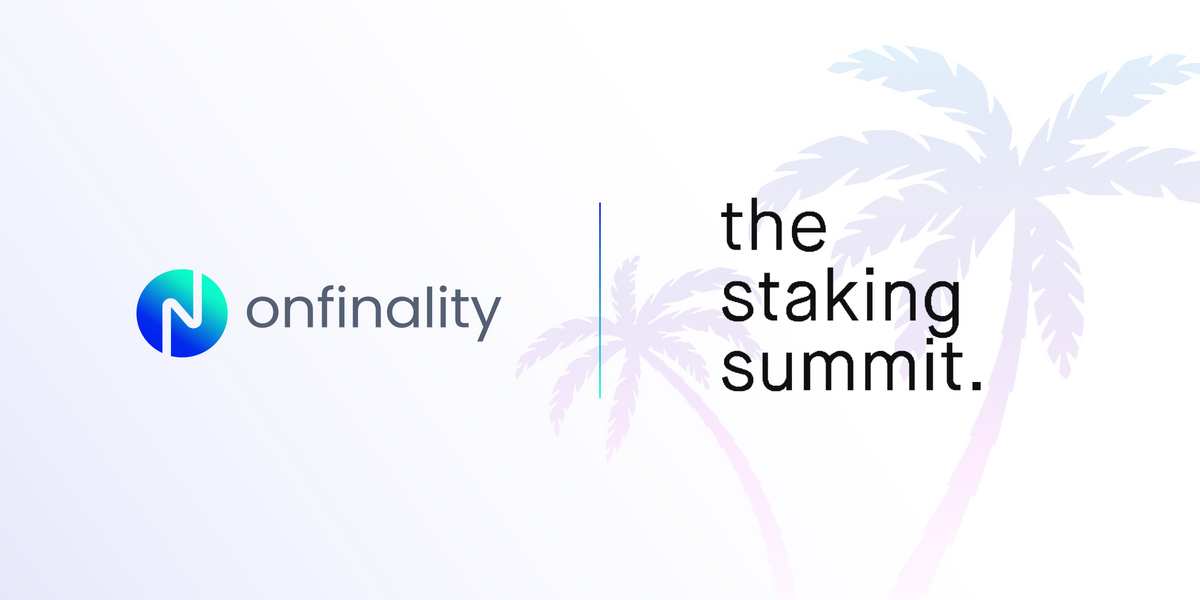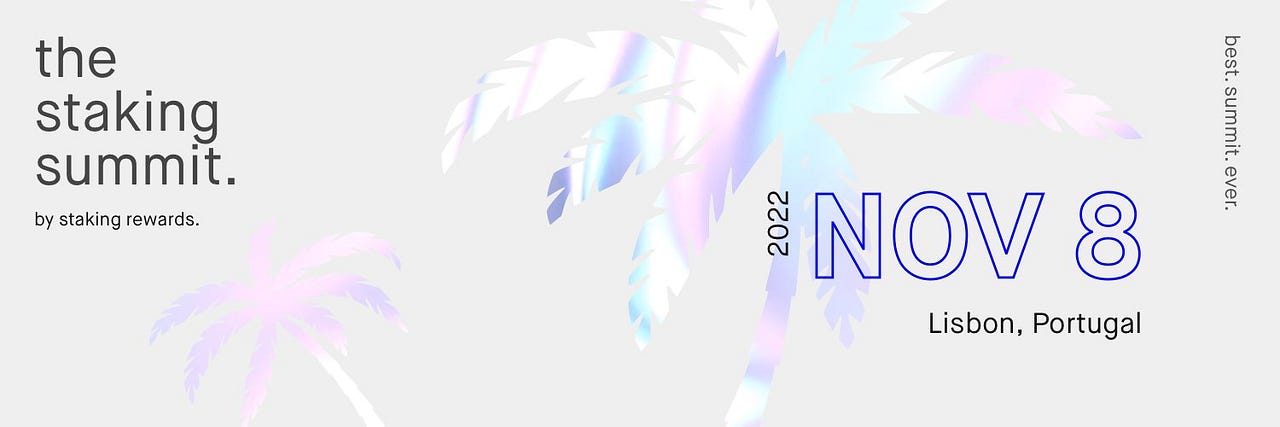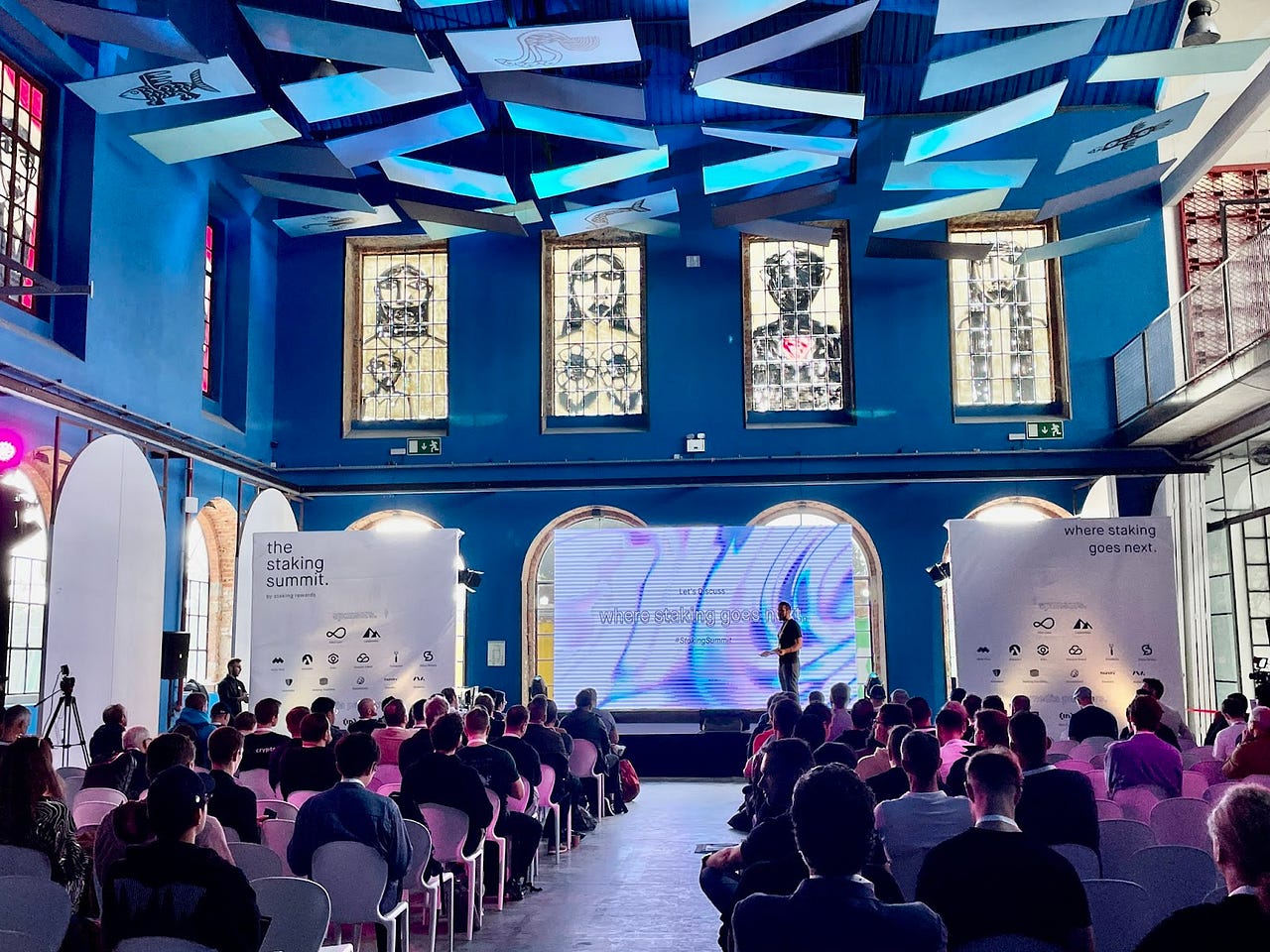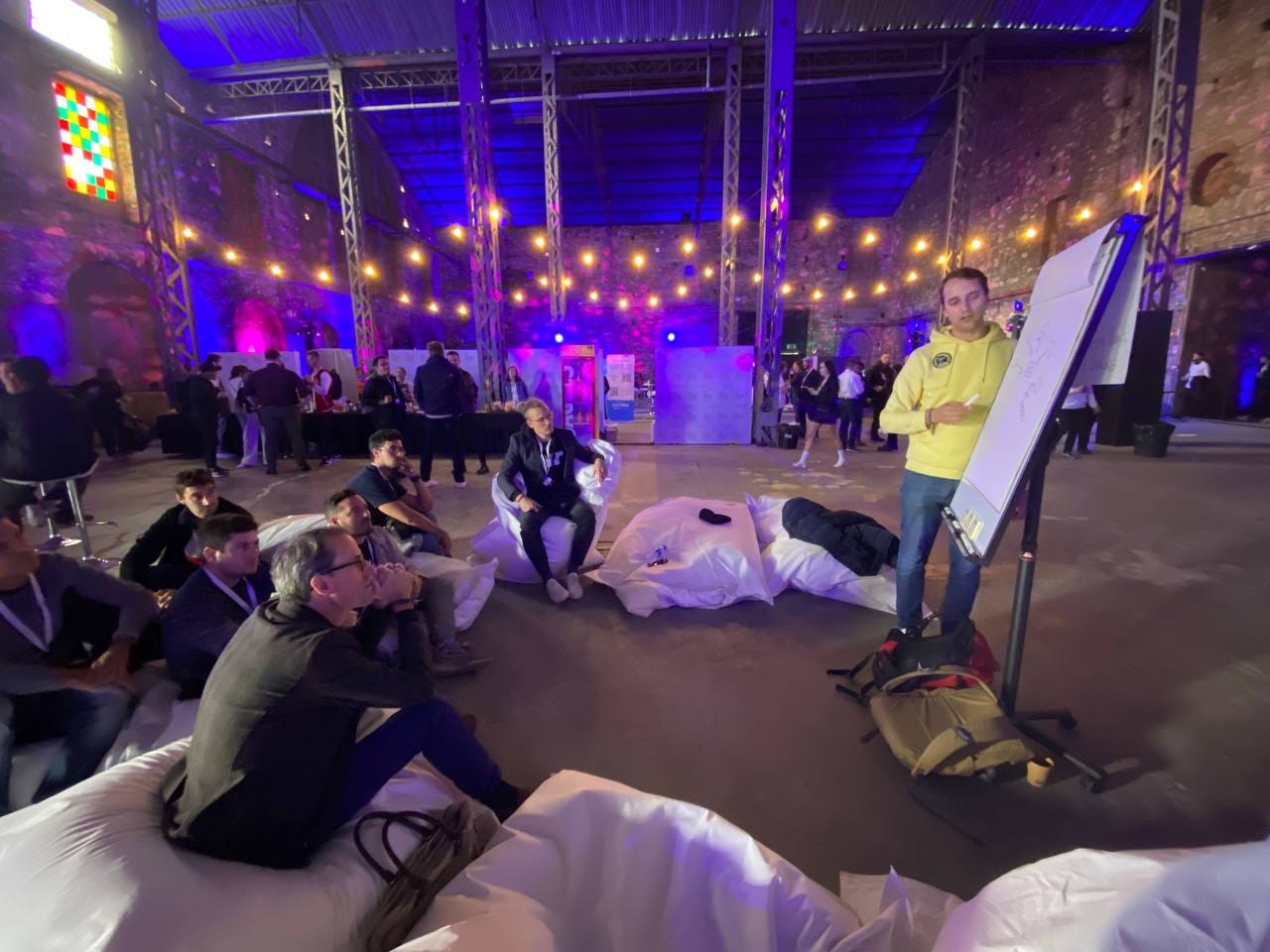OnFinality Lands On The World's First Staking Summit!
OnFinality's one-click node solution makes it easy for web3 developers to deploy reliable, scalable and fast nodes on 60 chains across Polkadot, Avalanche and Cosmos.

OnFinality, a web3 infrastructure provider supporting over 60 chains on multiple Layer-1 ecosystems, goes to the 2022 Staking Summit to help shape the future of staking!
OnFinality is a blockchain infrastructure platform that aims to support all blockchain teams in the world by providing mission critical, reliable and scalable infrastructure so that web3 teams can focus on building the decentralised future, faster.
This November, OnFinality’s Lisbon Team was at the 2022 Staking Summit to engage with the world’s staking’s best in class, and join the conversation on where the $200 billion+ staking industry is headed!
What Is The 2022 Staking Summit?

Staking Summit is the world’s first-ever in-person, crypto-agnostic, staking conference, that was organised by the leading authority on staking: Staking Rewards.
The Summit brings together top Proof of Stake (PoS) protocols, validators, investors, and staking experts across all blockchains and ecosystems for a day of discussions, keynotes, and networking, covering a broad range of topics from governance challenges, to novelties and solutions in Staking and Proof of Stake.

The Summit is a part of the overarching blockchain month in Lisbon that happened alongside events such as ETHLisbon, Web Summit, NEARCon, and Solana Breakpoint.
Many interesting topics were discussed at the summit, such as:
- Liquid Staking
- DVT (Distributed Validator Technology)
- MEV (Maximal Extractable Value)
- Validator Centralization
LIQUID STAKING
Don’t like when your coins are locked up and inaccessible during staking periods? Then say hello to your new best friend — liquid staking!
One of the benefits of liquid staking is the ability to interact with your funds while simultaneously earning rewards from staking. Unlike proof-of-stake (PoS) staking that “locks” funds up in a protocol, liquid staking funds remain accessible to the user.
Users deposit their funds in a DeFi application and receive a tokenised version of their funds. This means that users can interact with numerous DeFi platforms earning multiple rewards from one single pool of funds. The most famous protocol that provides liquid staking is Lido.

DVT (Distributed Validator Technology)
Distributed Validator Technology enables trustless staking through multi-operator validation. Validator keys are distributed between non-trusting nodes which operate under a consensus layer to perform duties on the chain.
Current traditional validators have a single point of failure. Only one validator client can be running and signing messages at any time. If two validators with the same private key sign conflicting messages the validator will be slashed.
Distributed Validator nodes operate together as a cluster through the inclusion of distributed validator middleware clients, which coordinate what each validator signs, and reconstitutes the partial signatures into an aggregate signature for the Distributed Validator.
DVT promotes client diversity, decentralization, and fault tolerance while mitigating slashing and downtime risks. A protocol that is working on developing this tech is Obol Network.

MEV (Maximal Extractable Value)
Another hot topic of the event was MEV (Maximal Extractable Value). MEV is the ability of block producers in a blockchain network to extract profits from users through the inclusion, exclusion, or rearrangement of transactions in blocks.
To build new blocks, nodes collect transactions stored in the mempool, which is a location where transactions are stored pending addition to the chain.
However, the blockchain doesn’t enforce rules on the contents (i.e. transactions) of a block or the ordering of transactions in the block. The block producer is free to arbitrarily include, exclude, or reorder transactions however they want.
As rational economic actors, block producers will often include, exclude, and re-order transactions based on the transaction fee the sender is willing to pay–which is how MEV became a multi-million dollar industry.
MEV causes multiple problems including attacking traders, increasing network-wide transaction fees, overloading the network, and may have negative implications for blockchain security.

VALIDATOR CENTRALIZATION
Centralisation has resurfaced as a hot topic since the Ethereum PoS upgrade. To become a validator on the Ethereum network, you must stake a minimum of 32 ETH. Whales and big crypto exchanges have staked millions of ETH to have a larger portion of the validator nodes.
Current staking activities look very centralised, with the leading liquid staking protocol Lido and leading centralised exchanges such as Coinbase, Kraken and Binance accounting for over 60% of the staked ETH.
This can be dangerous for the network and its users as it creates a large centralised target and point of failure, making the network more vulnerable to attack or bugs.
Kickstart Your Staking Journey With OnFinality!

Since our founding in 2019, we have served over 277 billion RPC requests to some of the largest web3 projects across Avalanche, Cosmos, and Polkadot, and are continually adding further integrations in our goal to be a leader in multi-chain infrastructure.
We recently added Phala and Ajuna nodes to our marketplace supporting over 60 networks across Avalanche, Cosmos, and Polkadot.
Our one-click node solution makes it easy for anyone who is looking to deploy nodes to have Dedicated Nodes spun up and running in a few clicks via the OnFinality app.
Sign up to the OnFinality app now to run a validator in 3 minutes!
You can now deploy reliable, scalable and fast nodes, and simply pay-as-you-go, without having to buy or set up your own hardware or make tools to monitor your node’s health and performance.
Ready to start staking on your favourite networks?
Learn how to set up your own Validator/ Collator with our newly launched ‘How-To’ Guide Series, which will enable you to start staking and earning rewards on your chosen networks.
You can also follow along this 1 minute video to see how easy it is to deploy a node on OnFinality!
Build Smarter with OnFinality.
About OnFinality
OnFinality is a blockchain infrastructure platform that saves web3 builders time and makes their lives easier. OnFinality delivers scalable API endpoints for the biggest blockchain networks and empowers developers to automatically test, deploy, scale and monitor their own blockchain nodes in minutes. To date, OnFinality has served over 277 billion RPC requests across 60 networks including Astar, Avalanche, Cosmos, Polkadot, Kusama, and Moonbeam, and is continuously expanding these mission-critical services so developers can build the decentralised future, faster!
